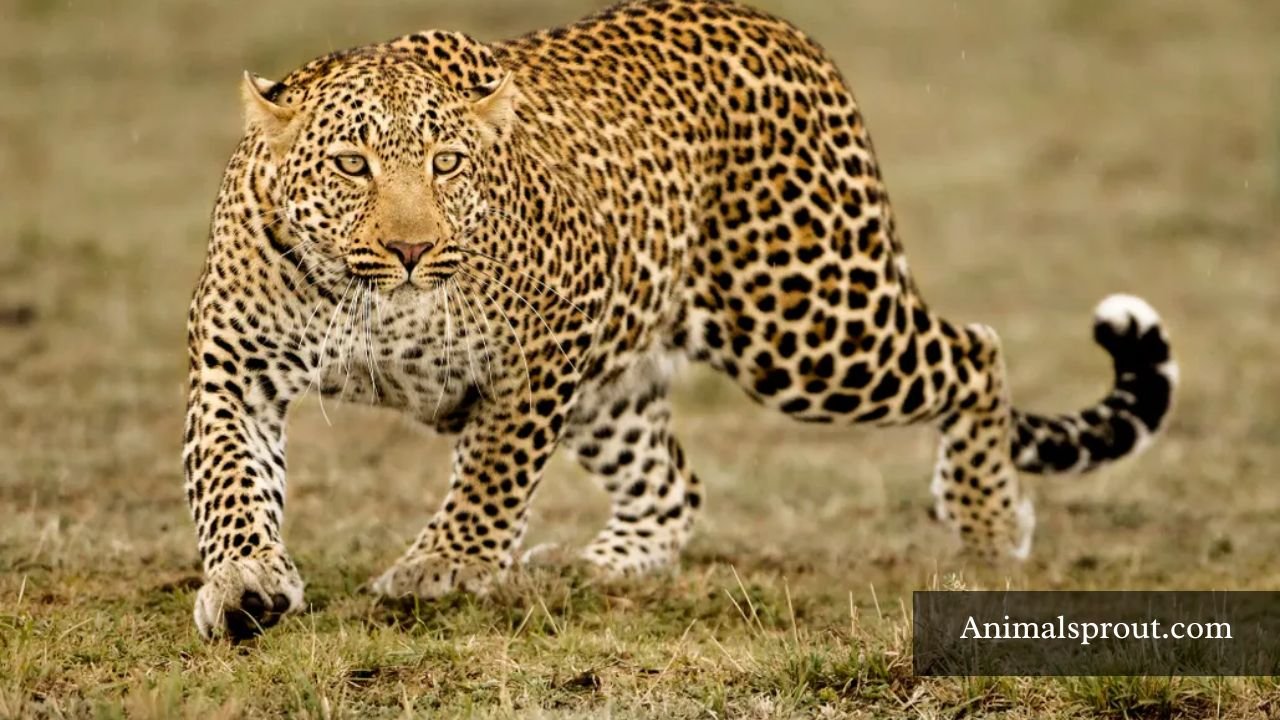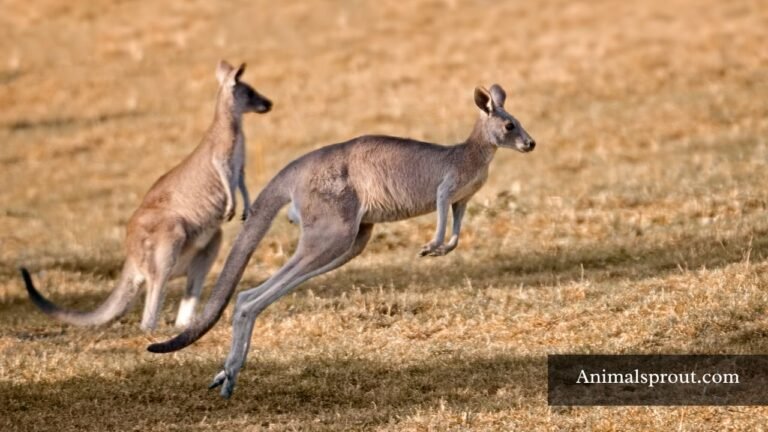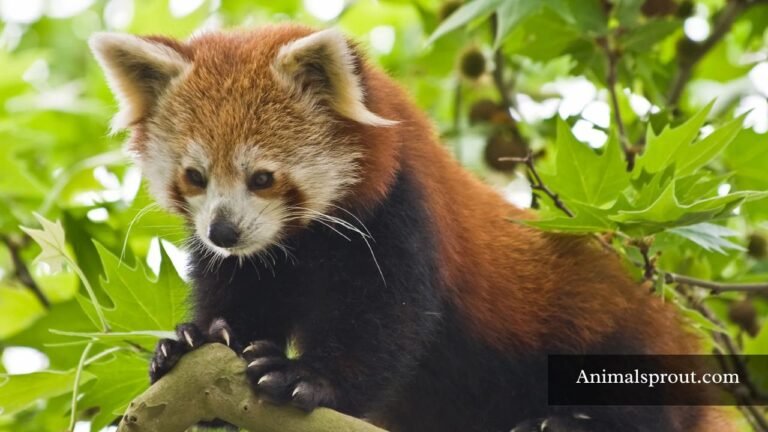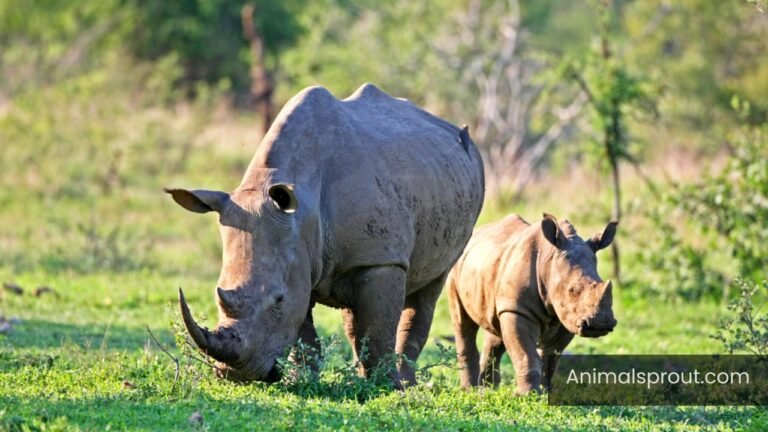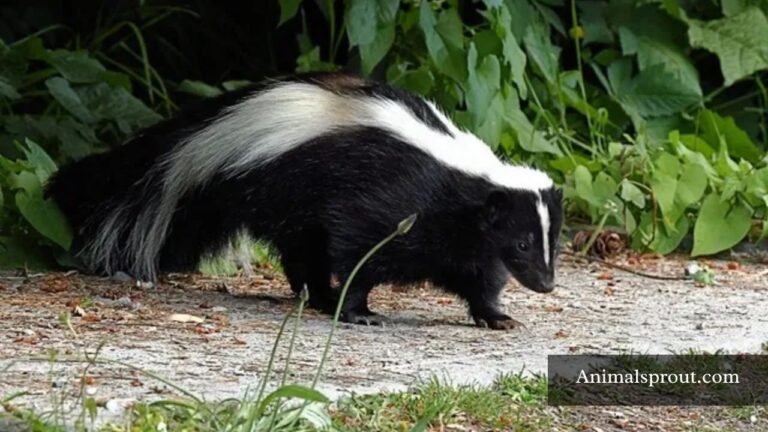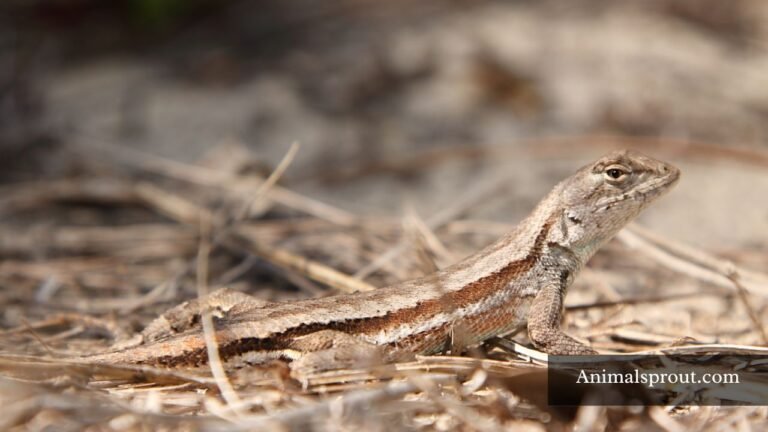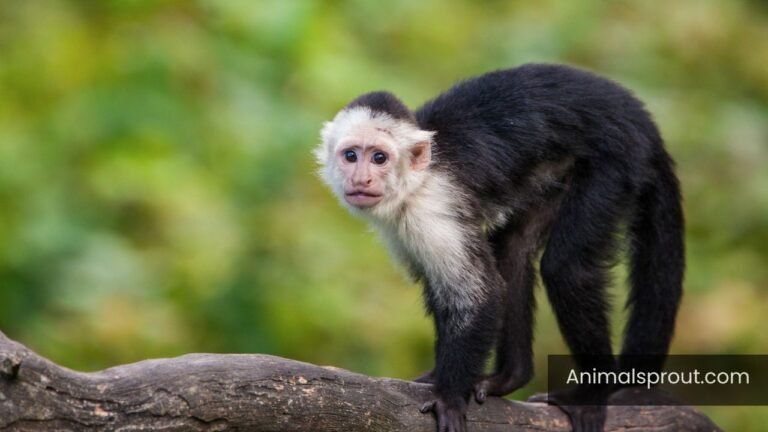Top 20 Sneaky Animals In The World (Images Included)
In the animal kingdom, this type of sly behavior is not just limited to family dynamics — it’s how many species thrive. In our exploration of sneaky animals in the world, we’ll uncover the remarkable adaptations and strategies these creatures use to navigate their environments. Get ready to dive into a world where camouflage and cunning reign supreme, showcasing the incredible ways animals outsmart each other and survive.
List of Sneaky Animals In The World
Below is the list of sneakiest animals in the world:
| Number of Animals | Sneaky Animals In The World |
| 1 | Skuas |
| 2 | Topi Antelope |
| 3 | Black Herons |
| 4 | Leopards |
| 5 | Alligators And Crocodiles |
| 6 | Golden Eagles |
| 7 | Weasel |
| 8 | Pearl Fish |
| 9 | Octopus |
| 10 | Owl |
| 11 | Cuckoo Bees |
| 12 | Cat |
| 13 | Foxes |
| 14 | Livingston’s cichlid |
| 15 | Butterflies |
| 16 | Orchid Mantis |
| 17 | Black Mamba |
| 18 | Chameleon |
| 19 | Leaf-Tailed Gecko |
| 20 | Brown Trout |
Skuas
Class: Aves
Diet: Carnivorous
Skuas are the ultimate opportunists in the animal kingdom, thriving on the fringes of other birds’ hard-earned efforts. These formidable scavengers have developed a reputation for their boldness and cunning. With a keen eye for their surroundings, skuas often patrol seabird colonies, waiting for the perfect moment to swoop in and snatch an unsuspecting chick or steal a meal right from under the beak of a smaller bird, showcasing a level of audacity that is both fascinating and chilling.
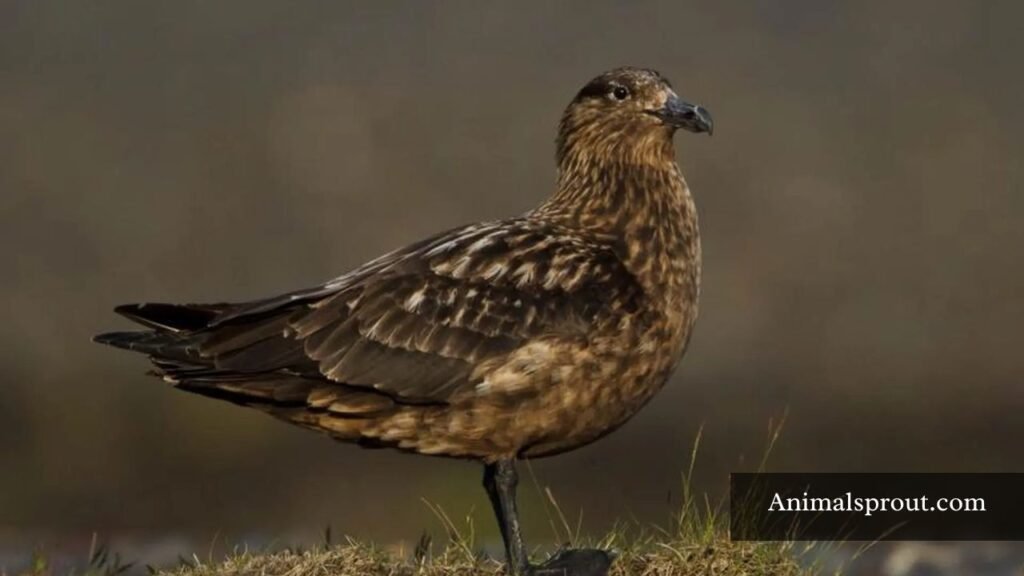
The adaptability of skuas goes beyond mere scavenging. These birds exhibit strategic intelligence; they can actually harass other seabirds into dropping their catch, demonstrating a level of coordination that speaks to their cunning nature. Their robust build and powerful wings make them not only adept predators but also fierce fighters, willing to defend their territory or plunder from rivals.
Topi Antelope
Scientific Name: Damaliscus lunatus jimela
Class: Mammalia
Diet: Herbivorous
The Topi antelope, a remarkable inhabitant of the African savannas, is often overshadowed by its more famous relatives like the wildebeest. Yet, this agile creature possesses a unique form of stealth that helps it thrive in the wild. Characterized by its striking chestnut-colored coat and distinctive dark markings, the Topi is not just visually appealing; it also employs clever tactics to evade predators. Its keen eyesight and acute sense of hearing allow it to detect motion and sounds that other animals might overlook, adding a layer of intrigue to its survival skills.
What sets the Topi apart, however, is its fascinating social structure. Often found in small herds, these antelopes engage in a behavior known as “vigilance swapping.” While some members of the group keep watch for danger, others can graze more freely, creating a system of mutual protection that highlights the intelligence of their social interactions. Additionally, their ability to adapt to different habitats, from open plains to more wooded areas, showcases their versatility, making them a true testament to evolutionary resilience. Whether basking under the African sun or bounding gracefully across the landscape, the Topi antelope is a vivid reminder of the intricate dance of survival found in nature.
Black Herons
Scientific Name: Egretta ardesiaca
Class: Aves
Diet: Carnivorous
Black herons are masterful in their hunting techniques, often showcasing an intriguing behavior known as “canopy feeding.” By spreading their wings in a distinctive umbrella shape, these enigmatic birds create a shaded area on the water’s surface. This clever deception draws in unsuspecting fish, lured not only by the darkness above but also by the enhanced visibility of their surroundings, as shadows conceal them from danger above.
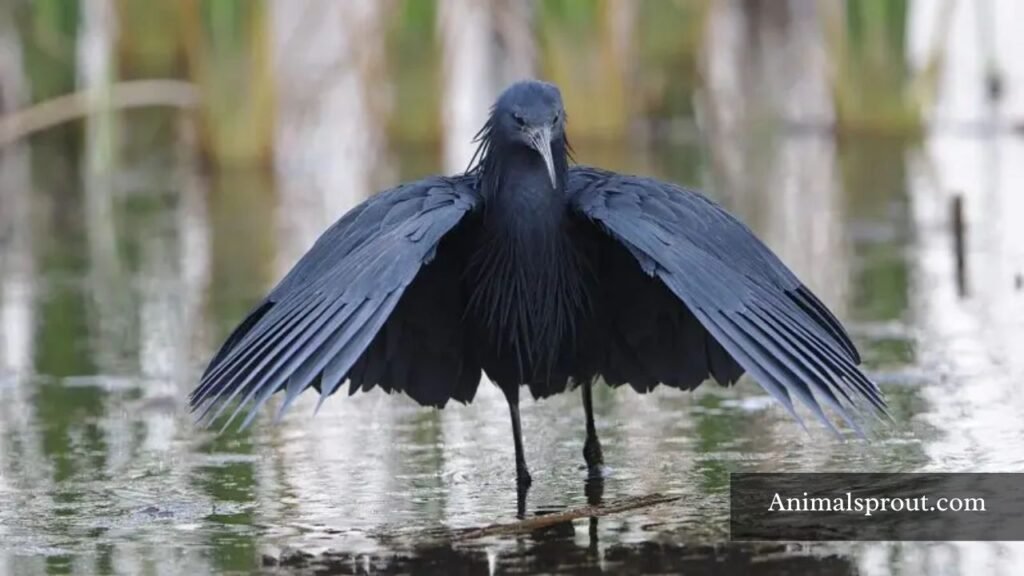
What’s particularly fascinating is how this technique underscores their adaptability. Unlike many other herons that rely solely on patience and stealth, the black heron engages in a procedure that combines opportunism with innovation. Their striking plumage, a sleek, glossy black, further adds to their stealth, allowing them to blend seamlessly into their surroundings. Observing them in action not only dispels the notion that all predators follow the same boring formula; it opens our eyes to the dazzling tactics found in nature’s playbook.
Leopards
Scientific Name: Panthera pardus
Class: Mammalia
Diet: Carnivorous
Leopards are masterful tacticians, blending stealth and agility into a fascinating survival strategy. Unlike their larger cousins, tigers, which prefer open fields, leopards thrive in varied habitats — from dense forests to rocky landscapes — allowing them to exploit numerous hunting opportunities. Their unique rosette-patterned coats not only serve as camouflage, but also allow these elusive big cats to merge seamlessly with their environment, facilitating a predatory approach that resembles a shadow gliding through the underbrush.
One particularly striking aspect of leopards is their adaptability. They are opportunistic eaters, preying on anything from small birds and rodents to larger animals like antelope, depending on availability. This flexibility is crucial in their survival, especially in regions where food sources can fluctuate dramatically due to seasonal changes. Additionally, leopards are known for their incredible strength; they often haul their catches up into the branches of trees to protect their meals from scavengers, showcasing not just physical prowess but also a cunning shrewdness in navigating their landscape.
Alligators And Crocodiles
Scientific Name of Alligator: Alligator mississippiensis
Scientific Name of Crocodile: Crocodylus niloticus
Class: Reptilia
Diet: Carnivorous
Alligators and crocodiles, often mistaken for one another, are masters of stealth with their well-adapted bodies and cunning behaviors. While their tough, scaly exteriors serve as natural armor, it’s their innate ability to blend into their environments that truly sets them apart. With eyes and nostrils perched just above the waterline, they can remain nearly invisible, waiting patiently for unsuspecting prey. This camouflage isn’t just an evolutionary quirk; it’s a finely honed hunting strategy that speaks to their survival skills.
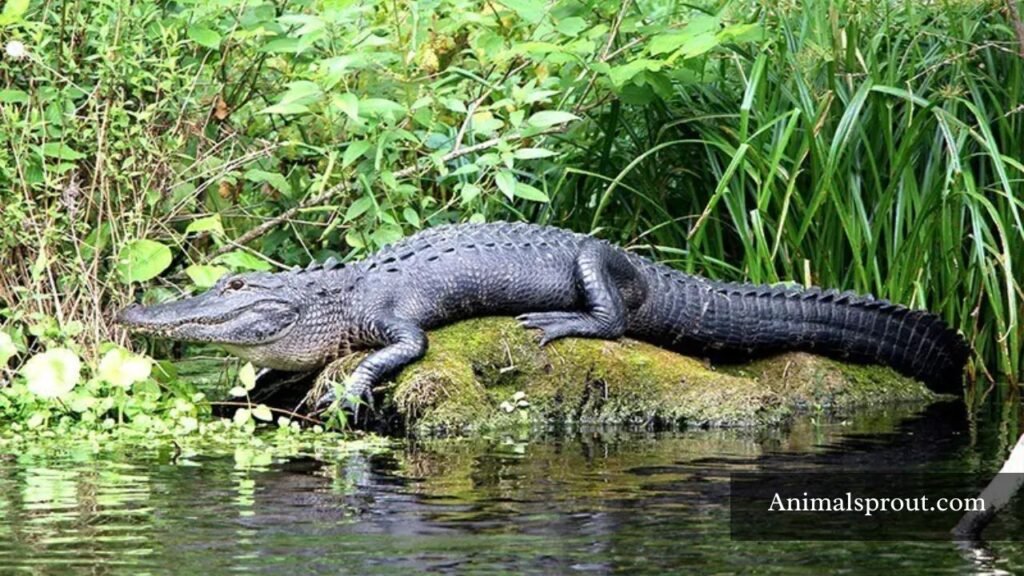
Interestingly, these reptiles adopt surprisingly social behaviors, especially in the breeding season when they engage in elaborate courtship displays. Males may bellow and perform water dances to impress potential mates, a stark contrast to their typically solitary nature. Moreover, while they possess a fearsome reputation, recent studies reveal that alligators, particularly, display a surprising level of care for their young, ferrying hatchlings to the water in their jaws. This mix of primal ferocity and nurturing instincts invites us to rethink our perceptions of these ancient reptiles, reminding us that beneath the surface lies a complex tapestry of behaviors that ensure their survival in a dynamic ecosystem.
Golden Eagles
Scientific Name: Aquila chrysaetos
Class: Aves
Diet: Carnivorous
Golden eagles, with their formidable wingspans and piercing gaze, embody a blend of grace and cunning in the wild. Known for their remarkable hunting skills, these raptors are not just powerful predators; they are also strategic thinkers. Observational studies reveal their use of clever tactics, such as luring prey closer by mimicking smaller birds or utilizing the terrain to ambush unsuspecting animals from above. This calculated approach showcases their intelligence, as they adapt their hunting methods to the behavior of different species, revealing a depth of adaptability not commonly recognized in avian hunters.
Moreover, golden eagles demonstrate remarkable social dynamics during the breeding season. Pairs may engage in aerial displays to strengthen their bond, but what’s fascinating is their ability to communicate silently through body language and flight patterns. This form of non-verbal communication can mislead competitors, marking their territory without uttering a sound. It’s a reminder that in nature, subtlety often trumps brute force, and the golden eagle stands as a testament to the intricate dance of survival that unfolds in our skies — a dance that combines stealth, strategy, and sheer beauty.
Weasel
Scientific Name: Mustela nivalis
Class: Mammalia
Diet: Carnivorous
Weasels are the ultimate stealth predators, embodying a surprising blend of agility and cunning that sets them apart in the animal kingdom. These small carnivores are masters of disguise, often slipping through tight spaces and blending seamlessly into their surroundings. Their lithe bodies and incredible speed allow them to embark on daring ambushes, catching prey off guard. This remarkable adaptability not only aids their hunting strategy but also positions them as significant players in maintaining ecological balance.
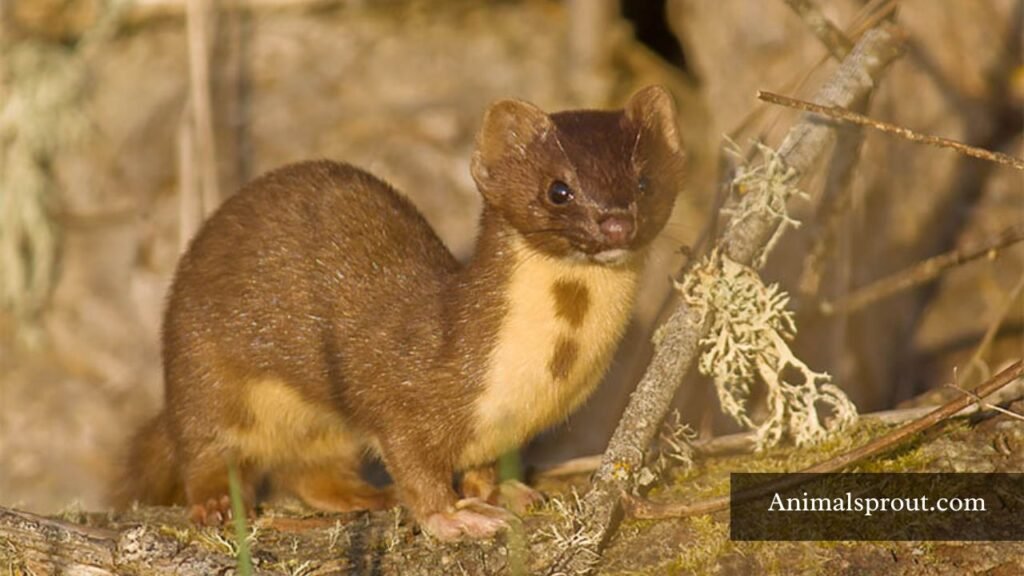
Interestingly, weasels exhibit a wide range of personalities, with some behaving more brazenly than others. While their reputation often revolves around sneakiness, these creatures can also display unexpected social behaviors, like cooperative hunting in certain species. As solitary hunters, they rely heavily on their keen senses — especially their acute hearing and sharp eyesight — to navigate through dense underbrush.
Pearl Fish
Class: Actinopterygii
Diet: Omnivorous
Pearl fish, often overlooked in the animal kingdom, showcase some truly remarkable behaviors that blur the line between survival and sneakiness. These small, elongated fish have developed a unique symbiotic relationship with sea cucumbers, finding refuge within their bodies. This unusual partnership not only offers the pearl fish protection from predators but also gives it an opportunity to steal bits of food from the sea cucumber’s gut, highlighting a clever strategy for survival that is both resourceful and a touch devious.
What really sets pearl fish apart is their ability to adapt their behavior based on their environment. During the day, they typically hide within the sea cucumbers, but at night, they emerge to hunt. This shift in behavior not only demonstrates their intelligence but also showcases their dual nature as both hunter and scavenger. Their stealthy approach to life in the reef serves as a reminder of nature’s intricate balance — where even the simplest interactions can reveal profound lessons in adaptability and coexistence.
Octopus
Scientific Name: Octopus vulgaris
Class: Cephalopoda
Diet: Carnivorous
Octopuses are nature’s master escape artists, flaunting their unmatched ability to blend into their surroundings. With a complex nervous system and the capacity to change color and texture in mere moments, these cephalopods can mimic the seafloor or coral reefs with astonishing accuracy. This camouflage prowess not only makes them elusive predators but also helps them evade larger threats.
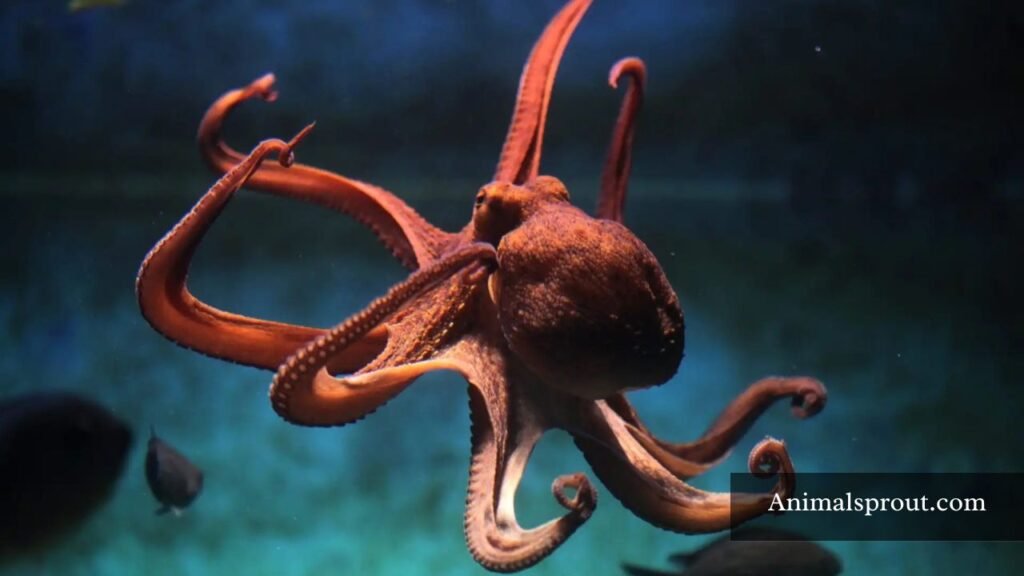
Beyond their disguise, octopuses possess a remarkable level of intelligence. They’ve been observed using tools, such as coconut shells and discarded bottles, to create shelters or shields from predators. This ingenuity showcases a level of problem-solving that many underwater creatures lack. In their complex underwater world, an octopus might employ distraction tactics by ejecting a cloud of ink, escaping while its predator is momentarily bewildered. Such strategies not only highlight their adaptability but spark curiosity about the cognitive capabilities of these enigmatic beings.
Owl
Scientific Name: Strigiformes
Class: Aves
Diet: Carnivorous
Owls are often viewed as symbols of wisdom, but beneath their serene exterior lies a masterful predator equipped with an extraordinary arsenal of stealthy adaptations. These nocturnal hunters possess asymmetrical ear placements, which allow them to pinpoint the slightest rustle of a mouse in total darkness. This keen auditory ability, combined with their silent flight, makes them the unseen shadow in the forest, striking fear into the hearts of unsuspecting prey.
What truly sets owls apart, however, is their unique hunting strategy. Unlike many predators that rely on speed or sheer strength, owls employ a patient ambush approach. They often perch motionless for hours, honing in on the slightest noises before launching a swift, calculated attack. This blend of stealth and strategy not only makes them formidable hunters but also speaks to their adaptability in various ecosystems, illustrating a captivating dance between survival and instinct in the wild.
Cuckoo Bees
Class: Insecta
Diet: Adult bees consume nectar, while the larvae rely on other bees as parasites.
Cuckoo bees are nature’s undercover agents, cleverly bypassing traditional nesting behaviors. Unlike their industrious relatives, these bees skip the labor of building nests and foraging for food. Instead, they invade the nests of other bee species, laying their eggs in the carefully prepared chambers of unsuspecting hosts. This parasitic strategy not only saves them energy but also offers their young a head start, feasting on the resources collected by the diligent workers.
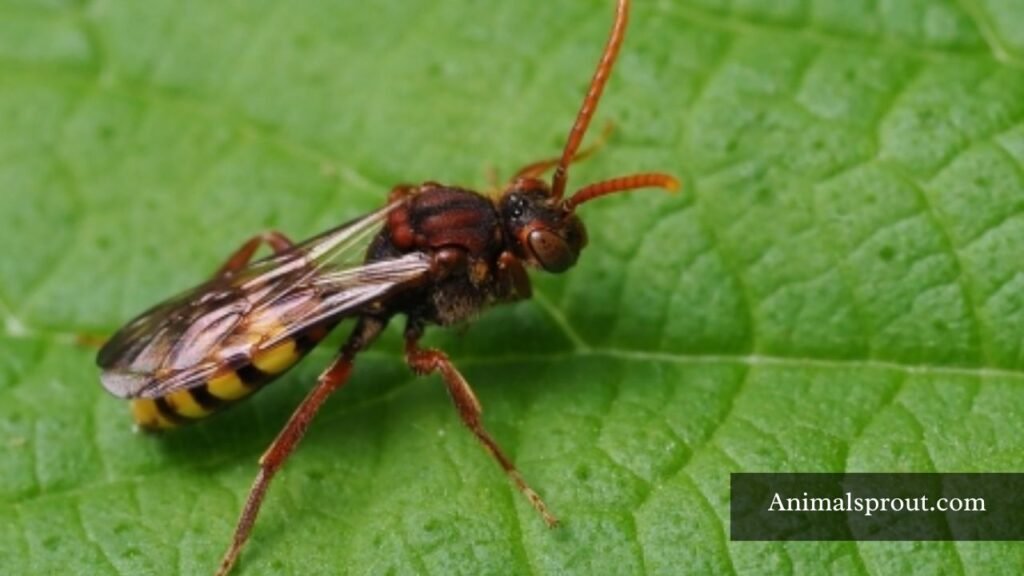
What’s fascinating is the level of mimicry involved. Many cuckoo bees have evolved to resemble their host species, blending in seamlessly. This clever disguise helps them avoid detection while they stealthily lay their eggs. Once hatched, the cuckoo larvae don’t just survive — they often consume the host larvae, ensuring they thrive at the expense of others. It’s a ruthless but mesmerizing adaptation that highlights the complex interplay of survival strategies in nature.
Cat
Scientific Name: Felis catus
Class: Mammalia
Diet: Carnivorous
Cats are the masters of stealth, often blending effortlessly into their surroundings as they stalk their unsuspecting prey — or, in most cases, their unsuspecting owners. This remarkable ability isn’t just for hunting; it also speaks to their instinctual nature. With those soft pads and low-slung bodies, cats make nearly no sound as they move, allowing them to surprise both mice and humans alike. The way a cat slinks behind the couch or pauses mid-pounce, gauging their next move, exemplifies their cunning nature.
Moreover, their enigmatic personalities give them an edge of unpredictability. One moment, they’re basking in the sun, and the next, they’re darting across the room as if propelled by an invisible force. This duality adds an exciting layer to having a cat — every day is a potential adventure. Their playful ambushes and spontaneous leaps remind us not just of their agility, but also of the joy in surprise. In a world that often feels predictable, a cat’s sneaky antics can leave us laughing, questioning, and ultimately enchanted by their mystical charm.
Foxes
Scientific Name: Vulpes vulpes
Class: Mammalia
Diet: Omnivorous
Foxes are nature’s consummate tricksters, revered and misunderstood in equal measure. With their keen intelligence and adaptability, these agile creatures thrive in diverse environments, from sprawling urban landscapes to the depths of dense forests. Unlike their canine relatives, foxes display a fascinating mix of solitary and social behaviors, often forming loose family groups that challenge the stereotype of the lone predator. Their elusive nature is highlighted by their incredible hunting techniques, particularly the “mouse leap,” where they can spring and land silently on unsuspecting prey — a ballet of stealth and precision.
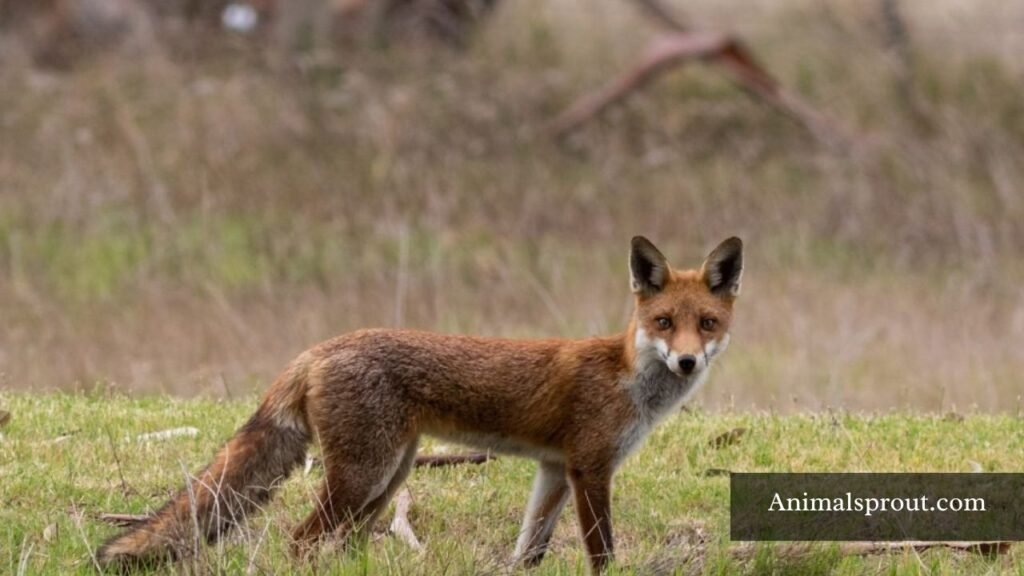
What truly sets foxes apart, however, is their remarkable ability to communicate. They employ a complex repertoire of vocalizations, body language, and even facial expressions to convey their intentions and emotions. Recent studies suggest that foxes have distinct calls that reflect their state of mind, ranging from warning signals to excited yelps of joy. This intricate social fabric reveals a level of emotional intelligence that many might overlook, allowing them to navigate their often tumultuous world with cunning and grace.
Livingston’s cichlid
Scientific Name: Nimbochromis livingstonii
Class: Actinopterygii
Diet: Carnivorous
Livingston’s cichlid, native to the vibrant waters of Lake Malawi, is a master of disguise. With its striking colors and intricate patterns, this fish doesn’t just rely on beauty; it employs clever tactics to survive. Often found lurking among rocks and vegetation, it uses mimicry to blend seamlessly with its surroundings, escaping the notice of both predators and unsuspecting prey.
Their complex social structures reveal even more of their cunning nature. These fish engage in unique forms of communication, utilizing body language and color changes to convey everything from territorial claims to reproductive intentions. Observing a group of Livingstone’s cichlids is like watching a well-rehearsed performance; they dart and flare, each movement steeped in intention.
What’s fascinating is its adaptive feeding behavior. Livingston’s cichlid exhibits a unique strategy by feeding on snails and small invertebrates, using its specialized teeth to crack open hard shells — an impressive feat that showcases its resourcefulness. This dietary choice not only highlights its cunning but also reflects the complex ecosystem dynamics of Lake Malawi.
Butterflies
Class: Insecta
Diet: Herbivorous
Butterflies, with their delicate wings and vibrant colors, might seem like the epitome of grace in the animal kingdom, but these enchanting creatures harbor a few surprising secrets. Beyond their beauty, many butterflies use their vivid markings as a cunning defense mechanism. Some species, like the monarch, are masters of deception; their bright colors signal toxicity to potential predators, while others mimic these hues without the harmful traits. This phenomenon, known as Batesian mimicry, allows non-toxic species to slip through dangers by imitating the look of their unpalatable cousins.
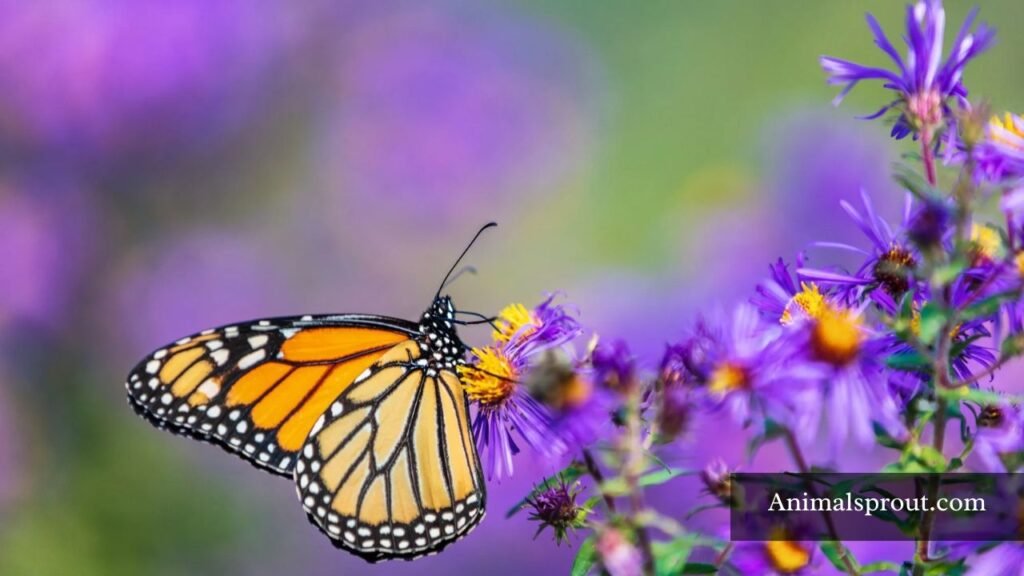
Moreover, the life cycle of butterflies includes a phase that can be seen as a great act of stealth — caterpillars often disguise themselves as leaves or twigs to avoid detection. This mimicry extends beyond their larval stage; adult butterflies often rest in a pose that camouflages them amidst foliage. The juxtaposition of their fragility and their ability to employ such clever survival tactics encapsulates the intricate dance of nature’s evolutionary strategies.
Orchid Mantis
Scientific Name: Hymenopus coronatus
Class: Insecta
Diet: Carnivorous
The orchid mantis is a master of disguise, blending seamlessly into its floral environment, a strategy that not only aids in ambush hunting but also serves as a form of protection against predators. Its petals-like limbs and vibrant colors mimic the very orchids it inhabits, making it a prime example of nature’s artistry. This mimicry goes beyond mere aesthetics; it transforms the mantis into a lethal predator that lures unsuspecting insects closer, believing they are merely approaching a flower.
In addition to its visual deception, the orchid mantis showcases fascinating behavioral adaptations. When threatened, it often adopts a posture that makes it resemble a flower swaying gently in the breeze, further enhancing its camouflage. This dual-purpose strategy of attracting prey while evading threats highlights the intricate balance of life in its rainforest habitat.
Black Mamba
Scientific Name: Dendroaspis polylepis
Class: Reptilia
Diet: Carnivorous
The black mamba, often shrouded in myths and misconceptions, is more than just a fearsome snake; it’s a master of adaptation and survival. Found primarily in sub-Saharan Africa, this snake has adapted to a variety of habitats, from savannas to rocky hillsides, showcasing an incredible versatility that belies its reputation. With a distinct, glossy black interior and a stunning emerald green exterior, it excels at blending into its surroundings, making it a sneaky predator that ambushes unsuspecting prey with remarkable stealth.

Known to be one of the fastest snakes in the world, the black mamba can reach speeds of up to 12 miles per hour, turning escape into an art form. Its lethal venom works quickly — not only incapacitating prey but also serving as a defense mechanism against threats. Unlike many of its kin, the black mamba tends to avoid conflict, preferring to rely on its speed and cunning rather than aggression.
Chameleon
Scientific Name: Chamaeleonidae
Class: Reptilia
Diet: Carnivorous
Chameleons are often celebrated for their astonishing ability to change color, but this remarkable skill goes beyond mere camouflage. These lizards utilize their color-changing prowess primarily for communication and temperature regulation, reflecting their emotional states and social interactions. By altering their hues, they can signal aggression, attract mates, or even express submission, effectively turning their skin into a visual language that resonates within their community.
Moreover, the process of changing color is not simply some magical trick; it’s a complex physiological response. Underneath their skin, specialized cells known as chromatophores expand and contract, revealing layers of pigment that mix to create a stunning palette. This ability underscores the sophisticated adaptations of the chameleon, showcasing how evolution shapes behaviors that enhance survival.
Leaf-Tailed Gecko
Class: Reptilia
Diet: Carnivorous
The leaf-tailed gecko is a master of deception, blending seamlessly into its environment. Found primarily in Madagascar, this extraordinary reptile has evolved to mimic dead leaves, showcasing nature’s penchant for camouflage. With its flat body and intricate patterns, it transforms into a striking piece of foliage, making it nearly invisible to both predators and prey.
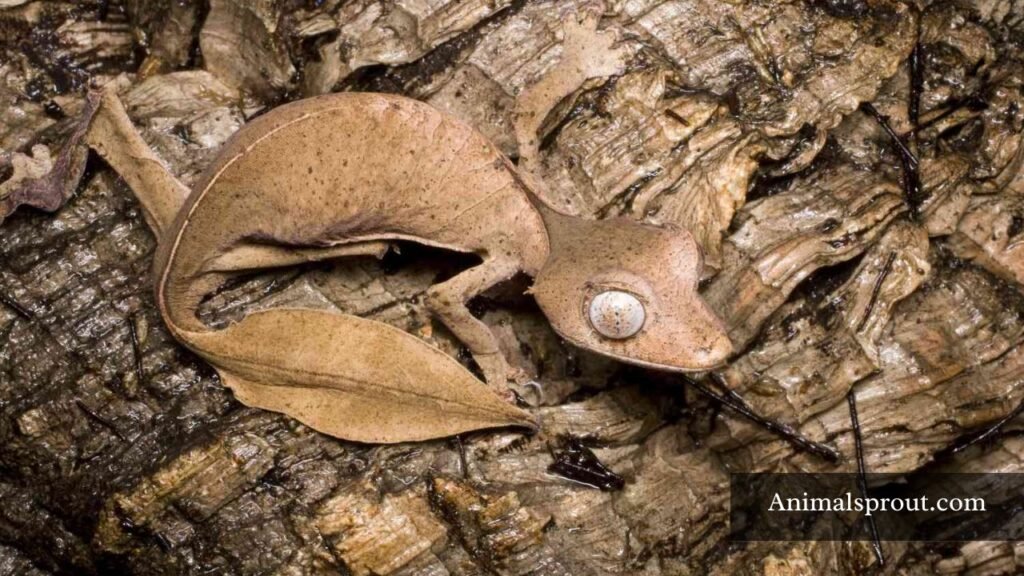
What’s truly fascinating is the gecko’s behavior — a fascinating interplay between stillness and stealth. When threatened, it remains motionless, capitalizing on its disguise. This strategy minimizes the chance of detection, allowing it to outsmart predators with a simple yet effective game of hide and seek. Observing these geckos in their natural habitat reveals a world where survival hinges not on speed or strength, but on the art of invisibility.
Brown Trout
Scientific Name: Salmo trutta
Class: Actinopterygii
Diet: Carnivorous
Brown trout are the masters of disguise in freshwater ecosystems. With their intricate, speckled skin blending seamlessly into the rocky riverbeds, they evoke the spirit of a skilled predator lying in wait. Their stealth isn’t just for show; it plays a crucial role in their hunting strategy. By remaining still and camouflaged, brown trout can ambush smaller fish and invertebrates, often surprising their unsuspecting prey.
But their sneakiness extends beyond mere appearances. Brown trout are known for their adaptive behaviors, often altering their feeding patterns in response to water temperature and seasonal changes. Additionally, they exhibit a fascinating ability to learn from their environment; they quickly recognize fishing lures and tactics, making them a notorious challenge for anglers. This cunning intelligence elevates them from simple fish to formidable opponents in the water, demanding respect from those who dare to pursue them.
Readmore: Explore Top 15 Animals That Waddle.
Final Thoughts
The world of sneaky animals is filled with remarkable adaptations that highlight nature’s creativity in the face of challenges. Whether it’s the mimicry of a chameleon or the ambush tactics of a hunter, these animals remind us that survival often hinges on wit and ingenuity. Their adventures provide us with endless inspiration and insight into the strategies that sustain life in different environments.
By understanding and respecting these ingenious beings, we can better appreciate the complexity of the natural world. Let’s commit to learning more about these fascinating creatures and advocate for their protection in an ever-changing landscape.
FAQs
What is the most sneaky animal?
The most sneaky animal has to be the octopus. Known for their intelligence and ability to blend into their surroundings, octopuses use both camouflage and dexterous movement to evade predators and sneak up on prey. They can change color and texture in an instant, making them masters of disguise in the ocean.
Are hyenas sneaky?
Yes, hyenas can be considered sneaky, particularly in their hunting tactics. They are known for their intelligence, often using teamwork and strategy to outsmart prey. Unlike some predators that rely solely on brute strength, hyenas might wait patiently or follow herds until the perfect moment to strike.their scavenging behavior adds to this reputation. Hyenas will often steal kills from other animals, using patience and cunning to take advantage of opportunities.

